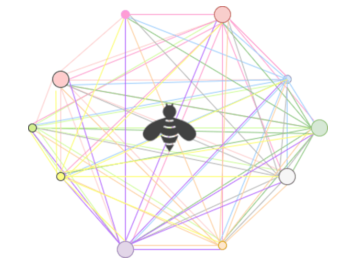
A Walkthrough of a Swarming Adventure
by Belma Muftic, Solution Architect at Authority Partners
A Walkthrough of a Swarming Adventure
In the fast-paced realm of IT, one of the utmost priorities is discovering efficient methods to address incidents, minimize downtime, and ensure the smooth functioning of the systems for which you are responsible. The Swarming Model, a revolutionary production support approach inspired by agile methodologies, not only accelerates issue resolution but also fosters collaboration and knowledge sharing within teams. In this blog, we will delve into the details of the Production Support Swarming Model, its benefits, and how to successfully implement it.
What is a Swarming Model?
The Swarming Model is collaboration-based process that has no definitive structure, can cover complex apps or routinely added features/improvements and is a great replacement for traditional support systems. It revolves around the concept of forming a “swarm,” multidisciplinary team when an issue occurs. The person that is most likely to resolve the issue as quickly as possible is assigned to the issue. If it cannot be done immediately and the person needs help, instead of passing a ticket between teams, the team members will “swarm” around the problem until the issue has been resolved.
“It takes a hive of bees to make a pot of honey.”
 Figure 1.1: The Swarming Model
Figure 1.1: The Swarming Model
These teams can consist of experts from various domains (developers, testers, system administrators, DevOps engineers, business analysts, designers, etc.), depending on the nature of the issue. With a swarming model, collaboration and knowledge sharing is promoted unlike the traditional response where different teams are handling separate aspects of the issue in a sequential manner. Intelligent swarming entails having no tiers and escalations from one group to another as well as initiating swarming if an issue is not resolvable at the point of customer contact. These issues are distributed to one of the swarms. There are three types of swarms:
- Severity 1 Swarm: Issues that are considered critical and that are designated a priority are sent to the severity 1 swarm. This team brings in the right people to solve these cases as quickly as possible.
- Dispatch Swarm: The dispatch swarm cherry picks cases, addressing issues that can be solved quickly by the right expert, unlike the traditional model where these types of issues are buried in the queue.
- Backlog Swarm: Usually consists of experienced analysts and R&D (research and development), which primarily focus on solving the most challenging cases.

Figure 1.2: Types of Swarms
What benefits do we get with the Swarming Model?
The most notable benefits of using this model are:
- Rapid Incident Resolution/Reduced Time to Resolve: Involving the right experts from various domains working together helps issues to be identified and resolved faster with a minimal impact on users and business. The issue is assigned to a skilled expert or a group and is not passed through multiple tiers, providing efficient services. Unlike the traditional approach that involves escalation and communication between groups, which can lead to miscommunication and delays, a swarming approach with clear communication helps us react faster by removing those obstacles.
- Reduced Ticket Backlog: The Swarming Model handles issues that can be solved quickly by the right expert unlike the traditional model where these types of issues are buried in a queue.
- Proactive Approach: Swarming isn’t limited to reactive incident response. It can also be applied proactively to address potential issues before they escalate, enhancing system stability.
- Knowledge Sharing: Cross-functional interaction helps team members enhance their skills and gain a deeper understanding of the system. It empowers team members to learn various skills from each other to achieve common goals.
- Teamwork: Working together under pressure strengthens collaboration and team spirit, improves communication and understanding, and fosters shared responsibility.
- Customer Satisfaction: With this approach, customer satisfaction is higher due to clear and transparent communication, faster reaction, a reduced time to resolve the issue and a lower number of issues waiting for resolution.
Implementing the Swarming Model
To implement this model, we can do the following:
- Define communication channels and tools to quickly assemble a swarm. There should be a clear process for handling swarm sessions.
- Define roles and responsibilities for each team member within a swarm so they understand their contribution and the value they bring.
- Invest in enhancing skills so every team member has a broad skillset to increase their contribution and effectiveness.
- Maintain and document details about the incident, resolution and what you learned so far. These documents can be of help for future incident handling.
- Make sure we share the experience and lessons learned through reviews to be able to improve.
Conclusion
A Production Support Swarming Model can benefit a business by prioritizing the customer and their experience through this process. It is a progressive approach that embraces collaboration, knowledge sharing, and prompt action to tackle production incidents. By breaking down silos and fostering a new culture of collective ownership, we can elevate our services and customers’ experiences.
Ready to bring the buzz of efficiency to your IT projects? Discover how we can transform your production support with our expertise in the Swarming Model. Connect with us via our Contact Us form or drop a line directly at hello@authoritypartners.com. Let’s create a swarm of success together!
And sweetest at the end:
Who needs the scoop? We’ve got the buzz.



